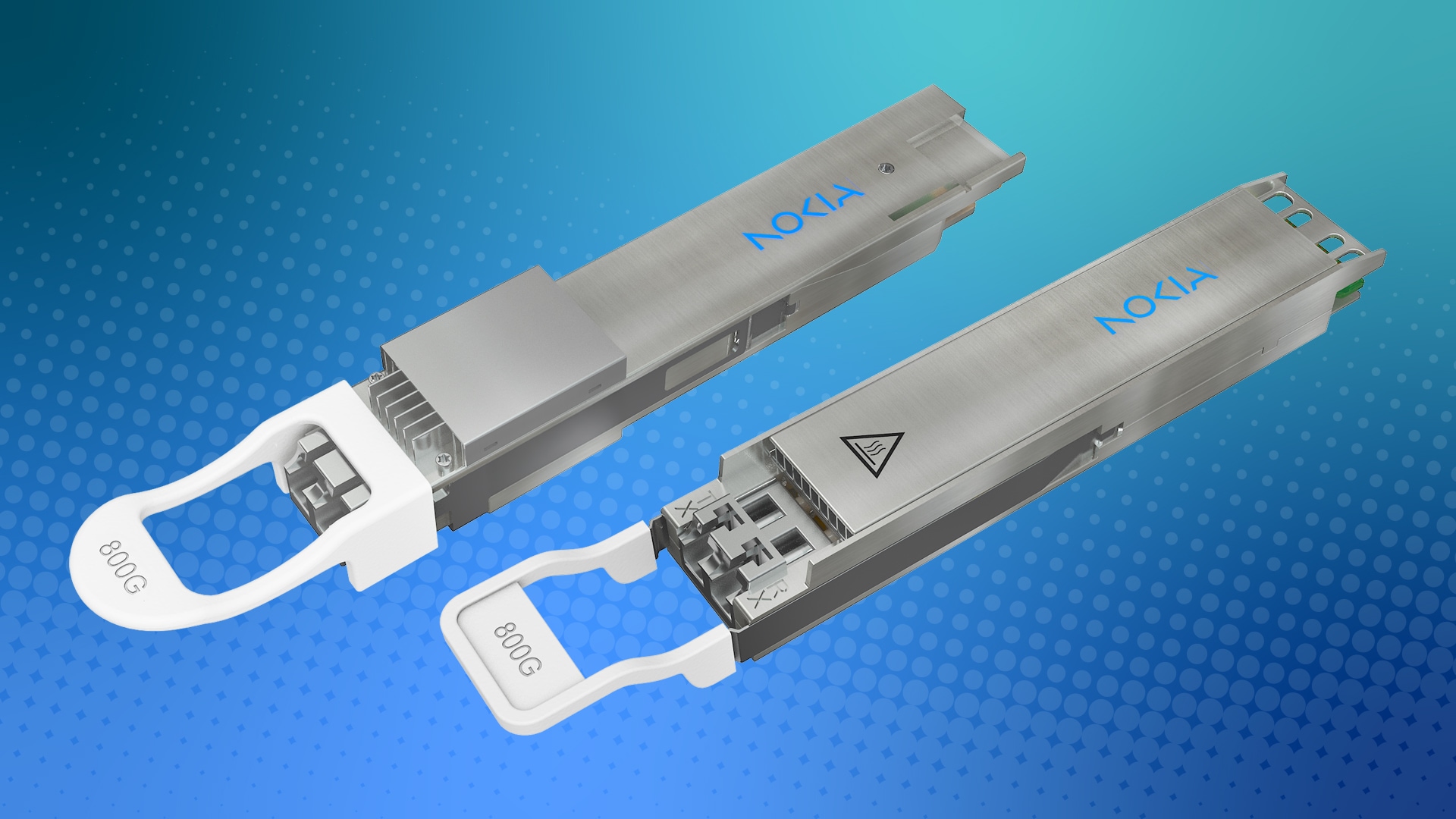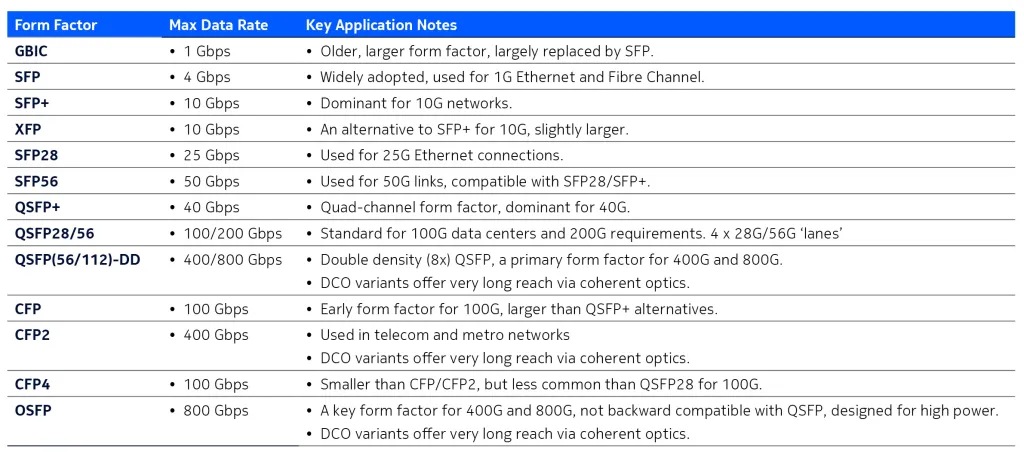What is a pluggable? The future of optical networking.

The network impact of the AI supercycle is top of mind for our partners and end-customers. When discussing Nokia data center fabric and interconnect solutions, pluggable optics modules are a key topic. For those of us in the optical transport and IP routing space, the term ‘pluggables’ refers to 800G coherent multi-haul optical transceivers. However, when engaging our system integrator partners or their enterprise customers’ IT managers, what the term ‘pluggables’ means can be less clear. In fact, on several occasions, as I waxed poetic about the value offered by Nokia coherent optical pluggable transceivers to those audiences — highlighting their reduced space and power requirements, I have been met with “What is a pluggable?”
What is a pluggable?
A pluggable, or small form-factor pluggable (SFP) optical transceiver is a compact, removable module standardized to convert high-speed electrical signals into pulses of light before transmission, and conversely, upon receiving the pulses of light, it converts them back to electric signals. Well, at least the simpler versions do it that way. More on that later. From around 2 in. (50 mm) to over 5 in. (125 mm) in length, the pluggable is inserted into a networking device, such as a switch, router, or server, and allows that device to be connected to a fiber optic network.
Introduced in the early 2000s, SFPs quickly replaced the larger Gigabit Interface Converter (GBIC) standard for Ethernet switches and IP routers. This allowed manufacturers to design switches and routers with a much higher port density, enabling more connections in the same space. SFP transceivers were widely adopted beyond Ethernet switches and IP routers for other high-bandwidth applications, such as data centers. The "pluggable" nature of these modules made it easy to add, remove or change them without replacing the entire networking device. This enables network operators to start with a basic, lower-cost network setup and then upgrade individual transceiver modules to faster speeds or longer-reach technologies as their business needs evolve.
Although SFPs were a new standard, their port design allowed backward compatibility with existing networks, while also providing a path to upgrade to higher-speed modules. This was accomplished through industry standards that defined the physical dimensions, electrical interface and operational specifications for SFPs and their future versions.
SFP pluggable form factors have evolved over the last two decades to support higher bit rates, higher input power and longer reach. As Table 1 demonstrates, multiple pluggable options have been deployed using different data rates and supporting various ‘lane’ quantities and speeds. Today’s communications service provider and hyperscale market demands 400G and 800G capable QSFP-DD and OSFP pluggable form factors aligned with new router and switch availability.
Table 1: Performance summary of different pluggable optical transceivers

Pluggable evolution: copper to fiber, grey to colored
Optical pluggable transceivers support higher bit rates, longer transmission distances and less power per bit delivered than copper variants. Copper interfaces and cabling typically tap out at 10Gb/s and 100m. An optical pluggable offers network operators a range of cost and performance options. There are ‘grey’ options that operate on a single wavelength within a fiber to transmit data — for example 1310 nm or 1550 nm. They are very cost-effective and offer network reach in the tens of kilometers. Multiple wavelength (colored) optical transceiver variants offer even higher bit rates and reach. This is known as dense wavelength division multiplexing (DWDM).
Grey optics offer simple, cost-sensitive, short-range connections where fiber is plentiful. Colored optics (DWDM) are for high-capacity, long-distance links where it is critical to maximize limited fiber pairs.
Why are next-gen coherent optics important?
A decade ago, optical communication systems primarily relied on intensity modulation with direct detection (IM-DD) to transmit information by modulating the light's intensity on and off. Next, 4-level pulse-amplitude modulation (PAM4) provided four levels of intensity, increasing the bit rate. As transmission speeds increased, IM-DD/PAM4 faced limitations due to optical fiber dispersion and nonlinear effects of travelling over long distances of fiber, in addition to the optical signal attenuation experienced over the link, making it difficult to meet the growing demand for bandwidth.
The introduction of coherent optical communication, which leverages the phase, amplitude, and polarization of light waves using higher-performance digital signal processing (DSP) enables more efficient data transmission. This breakthrough allowed optical systems to achieve longer-distance transmission at higher speeds, significantly improving capacity and performance.
What problems do pluggable optics solve?
The rise of coherent pluggable transceivers addressed the critical network transport problems of cost, complexity, and scalability posed by rapidly increasing data traffic. Before these small pluggable modules, high-speed, long-distance transmission was only possible using much larger, more expensive chassis-based optical systems. When we compare these legacy platforms to today’s 800G coherent multi-haul optical transceivers, network operators can reduce the power per bit delivered by 99%, down to 0.04W/Gbit. Inserting pluggable optics directly into host devices to provide optical networking capabilities, known as IP over DWDM (IPoDWDM), saves space.
Note these larger chassis-based systems have also evolved. Modern compact modular platforms support capacity over 10 terabits per second in only two rack units of space (3.5in. or 89mm high), versus decade-old chassis-based systems that filled a seven-foot telecom rack. The Nokia 1830 GX and 1830 PSI-M compact modular optical systems are modern examples, supporting 100 times the capacity in a fraction of the space.
What are the challenges of using IPoDWDM?
By employing IPoDWDM architectures, network operators benefit from the lowest power per bit delivered and lowest footprint. However, blending the IP and Optical domain comes with challenges and compromise. Coherent optical pluggables are constrained by the router port speed, and longer links can cause port capacity loss. The biggest challenge may be the loss of a clear demarcation between IP and Optical domains and the associated management complexity. Nokia offers the thin transponder deployment model as an alternative to IPoDWDM: This recent blog outlines the solution and its benefits.
Reducing cost and complexity while increasing density and flexibility
By integrating a sophisticated DSP and other components into a standardized, pluggable module, coherent transceivers reduce the overall system cost and complexity. Network operators can buy routers or switches with open, standardized ports and add the coherent (long- or short-reach) functionality only when and where it is needed, enabling a "pay-as-you-grow" financial model. The miniaturization and vertical integration of components within coherent pluggables provides better power efficiency per bit transmitted. This is a crucial factor for large data centers and network operators looking to control rising energy costs and reduce their environmental footprint.
Pluggable coherent optical transceivers, especially the latest 400G, 800G, and 1.6T generation promise a critical networking advantage. As enterprises navigate through the AI supercycle, they need to reduce networking cost and complexity while increasing networking density and flexibility. Simple pluggable optics are used to network 800 and 1.6Tb/s speeds between datacom racks on different floors, whereas the latest multi-haul coherent pluggable transceivers can also network across the city, country or the continent.
Regardless of the enterprise vertical, whether it’s research and education, fintech, health and life sciences, federal government, mission-critical utilities or oil and gas — or the networking use-case — be it building, campus or long-haul, pluggable-based architectures are top of mind. So now you know: the answer to What is a pluggable? It’s the future of optical networking.






